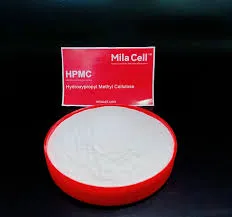
ਨਵੰ. . 09, 2024 20:38 Back to list
Best Methods for Dissolving HPMC in Water Effectively and Quickly
How to Dissolve HPMC in Water
Hydroxypropyl methylcellulose (HPMC) is a versatile and widely used polymer that functions as a thickening agent, binder, film-former, and emulsifier in various industries, including pharmaceuticals, food, and construction. When it comes to utilizing HPMC effectively, particularly in formulations requiring aqueous solutions, understanding the proper method for dissolving HPMC in water becomes critical. This article provides a comprehensive guide on how to dissolve HPMC in water efficiently.
1. Understand the Properties of HPMC
HPMC is a non-ionic cellulose ether that possesses excellent swelling properties and is soluble in both hot and cold water. However, it is essential to note that the viscosity and solubility can vary based on the molecular weight of HPMC. Typically, HPMC is available in various grades, which can influence how well it dissolves in water. Prior to the dissolution process, it’s crucial to refer to the manufacturer's technical data sheet for specific guidance tailored to the grade of HPMC you are using.
2. Preparing the Required Equipment
To dissolve HPMC effectively, gather the following materials - HPMC powder - Distilled or deionized water - A mixing container (preferably a clean glass or plastic beaker) - A stirrer or high-speed mixer - A scale for measuring the HPMC
3. Measuring the HPMC and Water
Start by accurately measuring the amount of HPMC you intend to use. It’s common to use a ratio of HPMC to water that fits your application needs; for instance, 110 is a standard ratio, but adjustments may be necessary depending on the desired viscosity. Measure the required volume of water ensuring it is either at room temperature or slightly warm, as this can enhance the dissolution process.
4. Gradual Addition of HPMC
how to dissolve hpmc in water

To avoid clumping and ensure better dispersion, slowly sprinkle the HPMC powder into the water while stirring continuously. This process, known as dusting, helps the HPMC to hydrate evenly and prevents the formation of lumps. Insufficient mixing will result in incomplete dissolution, impacting the final viscosity and performance of the solution.
5. Employing the Right Mixing Technique
Once the HPMC is added, use a stirrer or a high-speed mixer to blend the solution thoroughly. Initially, you may notice the HPMC appearing to float on the surface, but with continued stirring, it will begin to hydrate and dissolve. It’s important to be patient during this step, as full dissolution can take anywhere from 30 minutes to several hours, depending on the concentration and molecular weight of the HPMC.
6. Heating the Mixture (If Necessary)
If you are using a high-viscosity grade of HPMC or you require a more rapid dissolution, gently heating the solution (not exceeding 60°C) can significantly expedite the process. When using heat, be sure that the stirring continues to ensure even dispersion.
7. Adjusting the Viscosity
After complete dissolution, let the mixture cool down to room temperature if it was heated. Assess the viscosity of the solution; if it is too thick, additional water can be incorporated to achieve the desired consistency. Conversely, if the solution is too thin, more HPMC can be added, but make sure to repeat the dissolution process to avoid clumping.
Conclusion
Dissolving HPMC in water effectively requires careful measurement, gradual addition, and continuous stirring. By following these steps and being aware of the properties of the specific grade of HPMC you are using, you can create a stable, homogeneous solution that meets the needs of your application. Whether in the pharmaceutical, food, or construction industry, mastering the art of dissolving HPMC will enhance product performance and reliability.
-
The Widespread Application of Redispersible Powder in Construction and Building Materials
NewsMay.16,2025
-
The Widespread Application of Hpmc in the Detergent Industry
NewsMay.16,2025
-
The Main Applications of Hydroxyethyl Cellulose in Paints and Coatings
NewsMay.16,2025
-
Mortar Bonding Agent: the Key to Enhancing the Adhesion Between New and Old Mortar Layers and Between Mortar and Different Substrates
NewsMay.16,2025
-
HPMC: Application as a thickener and excipient
NewsMay.16,2025
-
Hec Cellulose Cellulose: Multi functional dispersants and high-efficiency thickeners
NewsMay.16,2025







